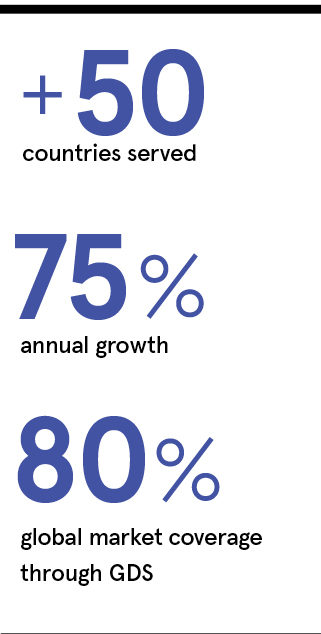Fragmented geographically and by the immense diversity of businesses in its ecosystem, every basis point counts for travel industry players. Inefficient and expensive payments are disproportionately important to maximising their profitability. Add this to the invisible costs of fluid regulatory, technological and geopolitical conditions, and the travel industry finds its margins squeezed tighter every year.
Traditional payment solutions, including corporate credit cards, expose travel brands to unnecessary costs. For example, some budget airlines charge a fee for payments via particular card types, while other preferred payment methods, such as bank transfers and IATA BSP (International Air Transport Association billing and settlement plan), leave companies exposed if an airline goes into default.
From airlines to hotels and cruise bookings, travel agents and online travel agencies (OTAs) typically pay many suppliers in multiple currencies with high transaction volumes. In this scenario, even relatively small charges seriously damage the bottom line. For example, when a company books a business trip through their travel agency, that agency has to pay its suppliers, including low-cost airlines which charge anywhere between 0.5 and 3 per cent to accept payments by higher-cost cards.
Payments are an organisational blind spot in the travel sector when they should be anything but
In an industry with 5 to 10 per cent profit margins, a 3 per cent fee is tremendously impactful. That’s why more and more travel companies are choosing payments optimisation platforms specially designed for business-to-business payments to see their margins improve by up to 26 per cent.
“Payments are an organisational blind spot in the travel sector when they should be anything but,” says Aran Brown, chief executive at Ixaris, a leading global payments company.
 Ixaris’s intelligent payments optimisation platform is scheme agnostic, offering both VISA and Mastercard and providing prepaid or credit accounts. This flexibility ensures the right funding and payment options are available to suit each company’s needs.
Ixaris’s intelligent payments optimisation platform is scheme agnostic, offering both VISA and Mastercard and providing prepaid or credit accounts. This flexibility ensures the right funding and payment options are available to suit each company’s needs.
Travel brands that don’t embrace technologies empowering them to achieve greater control over costs can expect to face additional difficulties in managing their payments. Travel agents using less flexible platforms often require back-up contracts to ensure they can access all the payment methods they require. Using multiple platforms makes payment reconciliation and administration exponentially complex.
“A lot of our competitors provide either a prepaid or a credit model, neither of which is necessarily the best model for everyone. And we’re seeing competitors’ card acceptance rates decreasing simply due to the fact that they can only offer one or two card types. OTAs that use these platforms need to create relationships with many suppliers and are losing out on profitability as they aren’t using a platform with a complete product portfolio to choose from,” says Mr Brown.
Ixaris supports its customers with continuous research on the payments ecosystem. “We share the findings of our monthly research with our customers. We work with our clients and partners to help educate their employees about the best cards to use in each payment situation. By providing the aggregate data to customers about how our cards are being used, they can gain genuine insight into how to make their payment systems more efficient,” Eddie Harrison, product director at Ixaris, concludes.
Ixaris Payments is available direct to travel brands or through integrations with the major global distribution system platforms, which means a travel company’s employees don’t have to juggle multiple systems to make and pay for a booking.
For more information please visit www.ixaris.com
